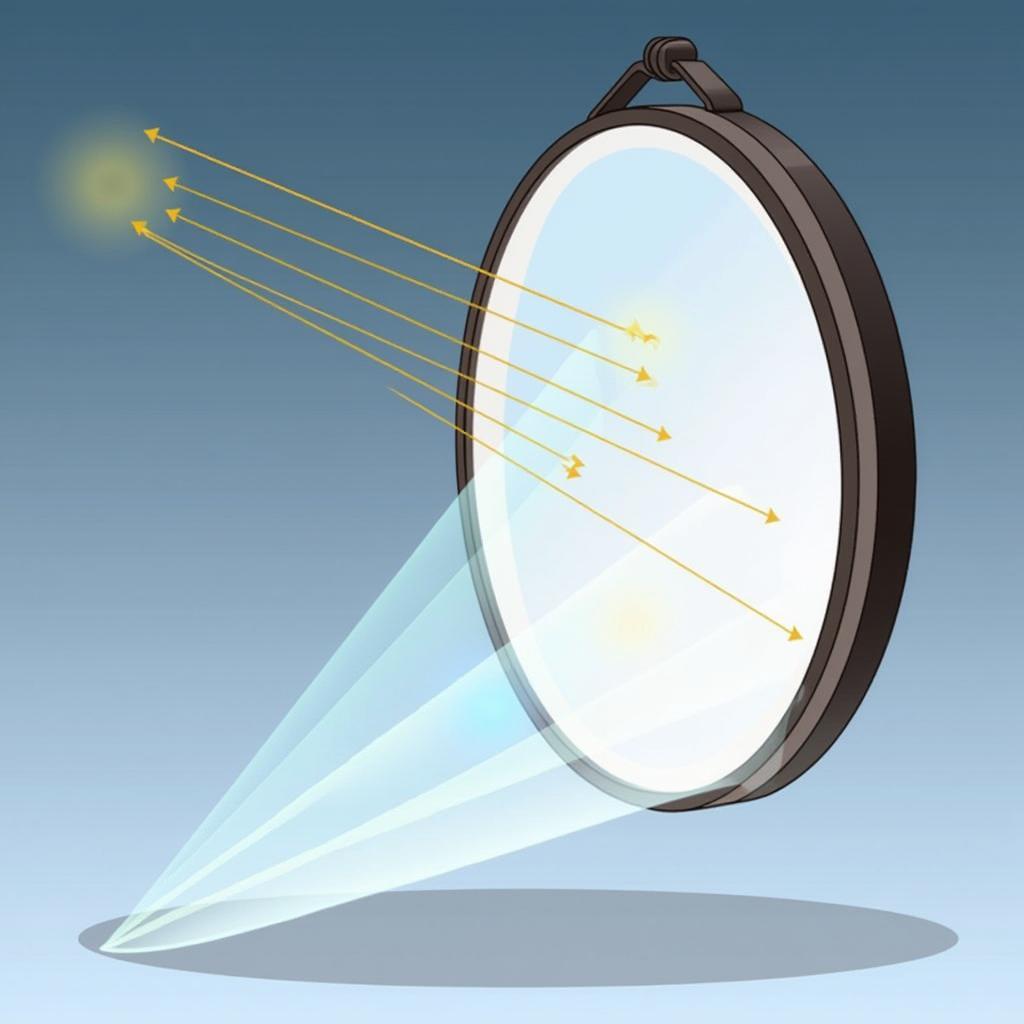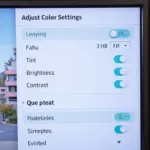A mirror’s color isn’t as straightforward as it seems. While we perceive mirrors as simply reflecting the colors around us, the reality is a bit more nuanced and involves a fascinating interplay of physics and perception. So, what’s the color of a mirror, really? Let’s dive into the science behind this seemingly simple question.
Decoding the Reflection: A Mirror’s True Color
Perfectly reflecting mirrors would, ideally, be white. This is because white light is composed of all colors in the visible spectrum. A perfect mirror would reflect all these colors equally, resulting in a white reflection. However, perfect mirrors don’t exist in reality.
In practice, mirrors absorb a small amount of light. Most mirrors have a slight green tinge due to the glass used in their construction. This green tint is often imperceptible to the naked eye unless looking at multiple reflections, such as in a “mirror tunnel.” In such cases, the green tint becomes more apparent with each reflection. This slight absorption affects the color of the reflected light, albeit subtly. You can think of it like adding a very faint green filter to the reflection.
The Science Behind the Reflection: How Mirrors Work
Mirrors work by reflecting light rays. The backing of a typical mirror is coated with a highly reflective material, usually silver or aluminum. This reflective layer bounces back the light that strikes it, creating the mirror image we see. The quality of the reflection depends on the smoothness of the surface and the reflectivity of the coating. The smoother and more reflective the surface, the clearer and more accurate the image.
 Mirror Reflection Physics and Light Rays
Mirror Reflection Physics and Light Rays
Similar to how to print background color in word, manipulating light plays a crucial role in how we perceive colors. The angle of incidence, the angle at which light hits the mirror, equals the angle of reflection, the angle at which light bounces back. This principle governs how we see ourselves and the world around us reflected in the mirror.
Why Do We See Colors in the Mirror?
We see colors in the mirror because the mirror reflects the light waves that carry color information. Objects absorb certain wavelengths of light and reflect others. The reflected wavelengths determine the color we perceive. The mirror simply bounces these wavelengths back to our eyes, allowing us to see the color of the object as if we were looking directly at it. The ability of a mirror to reflect these wavelengths effectively contributes to the accuracy of the color reproduction.
Mirror Color Perception: Beyond the Surface
“The perception of a mirror’s color is often influenced by the surrounding environment,” states Dr. Anya Sharma, a leading expert in color optics. “The colors of the objects being reflected can create an illusion that the mirror itself has a color cast.” This explains why a mirror in a brightly colored room might appear to have a slight tint of that color. In reality, the mirror is simply reflecting the dominant color in the room.
What Color Matches Olive Green Pants? A Quick Aside
Choosing complementary colors can sometimes be challenging. If you’re curious about coordinating outfits, exploring color combinations like what color matches olive green pants can be a valuable resource for creating stylish and harmonious looks.
Conclusion: The Elusive Color of a Mirror
So, what’s the color of a mirror? Technically, a perfect mirror would be white. However, due to slight imperfections and the inherent properties of the materials used, real-world mirrors tend to have a very faint green tint. This subtle green hue, often imperceptible in single reflections, becomes noticeable in multiple reflections. The perceived color of a mirror can also be influenced by the colors of the objects and surroundings being reflected. Understanding the science behind reflection helps us appreciate the complex nature of this seemingly simple object. For further exploration on intriguing color topics, you might be interested in learning more about what color is ditto.
FAQ
- Can mirrors reflect UV light?
- What is a two-way mirror?
- Why do some mirrors distort reflections?
- How are mirrors made?
- What is the difference between a mirror and a prism?
- Do all mirrors have a green tint?
- Can a mirror reflect sound?
For assistance, contact us at Phone Number: 0373298888, Email: [email protected], or visit us at 86 Cau Giay, Hanoi. Our customer service team is available 24/7.

